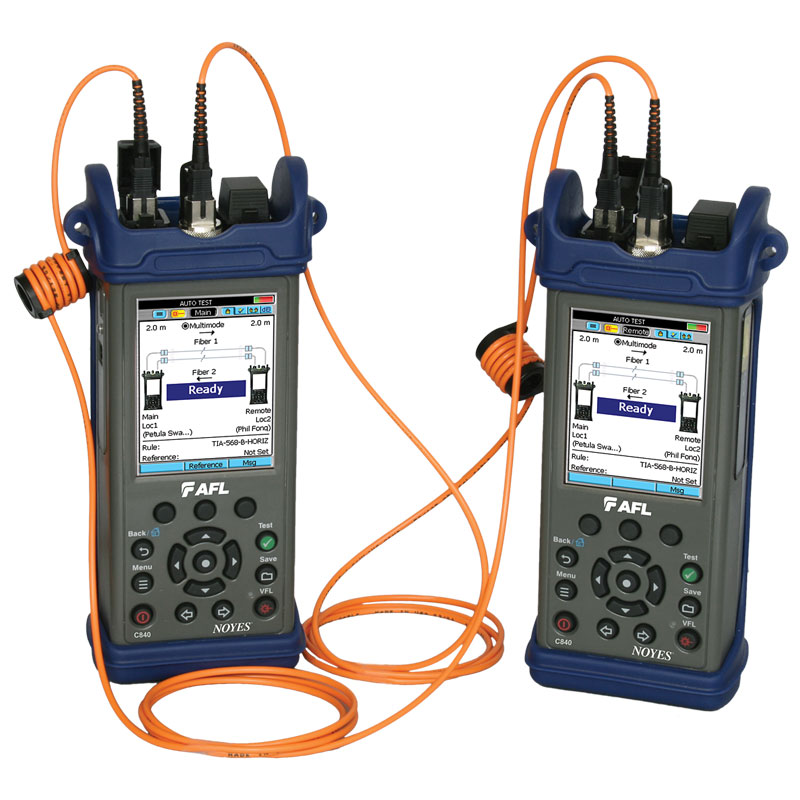All You Need to Know Concerning Robotic Vision and Its Applications in Advanced Optical Dimension Equipments
Robotic vision represents a considerable advancement in the junction of computer vision, expert system, and artificial intelligence. This modern technology boosts the precision of optical dimension systems, allowing real-time information analysis and improved quality assurance. Its influence covers multiple industries, from producing to health care. Nevertheless, the progressing landscape of robot vision questions concerning future capacities and applications (optical fibre diameter analyser). What technologies lie ahead in this transformative area?
Recognizing Robotic Vision: Secret Concepts and Technologies
Robotic vision encompasses the modern technologies and approaches that make it possible for machines to translate and recognize visual information from their environment. This area integrates aspects of computer vision, expert system, and equipment understanding to assist in automated decision-making based upon visual information. Trick concepts include picture processing, which includes the enhancement and evaluation of pictures to extract purposeful features, and things acknowledgment, which enables machines to recognize and categorize things within a scene.

The Assimilation of Robotic Vision With Optical Measurement Solutions
As industries increasingly require accuracy and effectiveness, the assimilation of robotic vision with optical dimension systems has arised as a transformative approach. This synergy permits robots to view and analyze their environments, improving the capacity of optical measurement systems to examine and assess objects with unparalleled accuracy. By furnishing optical sensing units with sophisticated imaging technologies, robot vision makes it possible for real-time information collection and processing, assisting in instant modifications to measurement parameters.
The combination empowers automated systems to detect variants in dimensions, surface area quality, and positioning, which are vital in top quality control processes. Boosted algorithms, such as artificial intelligence, further boost this combination by boosting the systems' ability to adjust to different atmospheres and scenarios. As a result, the combination not just enhances dimension processes yet likewise decreases errors, making certain that products fulfill rigorous market requirements, consequently solidifying the function of robotic vision in the future of optical measurement systems.
Applications of Robotic Vision in Manufacturing
In modern-day production environments, the use of vision systems has actually changed manufacturing processes by enabling equipments to carry out tasks with impressive accuracy and rate. Robotic vision systems are increasingly used for quality assurance, where they examine products for problems and guarantee adherence to requirements. These systems make use of cameras and progressed algorithms to assess products in real-time, considerably minimizing the threat of human mistake.
Furthermore, robotic vision helps with automation in assembly lines, allowing robots to properly recognize parts and construct them with very little downtime. This modern technology likewise improves stock administration, as vision systems can keep an eye on stock levels and spot disparities, assuring a smooth supply chain.
Additionally, robotic vision aids in the execution of clever manufacturing facilities, where data from vision systems can be integrated with various other modern technologies to enhance workflows. Generally, the applications of robotic vision in manufacturing demonstrate its critical role in improving effectiveness, top quality, and performance across various industries
Robotic Vision in Health Care: Reinventing Person Treatment

In rehab, robot vision aids in i thought about this checking client development and tailoring therapy sessions to private requirements. It supports medical professionals by automating jobs such as information collection and person surveillance, enabling more time to concentrate on direct patient interaction. Additionally, robot vision boosts telemedicine by making it possible for remote medical diagnosis and virtual consultations, bridging the void in between people and medical care providers. Overall, the application of robot vision in healthcare is revolutionizing individual care, resulting in boosted outcomes, efficiency, and patient contentment.
Future Trends and Advancements in Robotic Vision Modern Technology
The rapid advancement of robot vision innovation promises to additionally enhance its applications throughout various industries, consisting of health care. Future fads show a significant shift towards including expert system and artificial intelligence, allowing systems to discover from huge datasets and boost accuracy gradually. Enhanced sensor modern technologies and deep understanding formulas are anticipated to fine-tune object recognition abilities, enabling robotics to interpret complex settings better.

Furthermore, the integration of increased reality (AR) with robotic vision will likely revolutionize exactly how robots assist in procedures and diagnostics. This harmony will certainly assist in real-time information visualization, improving decision-making processes. Furthermore, miniaturization of parts will certainly lead to more small and flexible robot vision systems ideal for a selection of jobs. As these improvements unravel, sectors will certainly witness enhanced automation and efficiency, strengthening robotic vision as a foundation of cutting-edge technical remedies.
Often Asked Concerns
What Are the Main Parts of a Robotic Vision System?
The primary elements of a robot vision system include video cameras for photo capture, processors for data evaluation, algorithms for analysis, and actuators for motion. With each other, these aspects make it possible for robots to perceive and connect with their atmosphere effectively.
How Does Robotic Vision Improve Precision in Measurements?
Robotic vision boosts measurement accuracy by utilizing innovative imaging technologies, making it possible for accurate item discovery and spatial analysis. This capability lowers human mistake, raises repeatability, Discover More Here and enables for real-time modifications, inevitably boosting total dimension integrity and efficiency.
What Industries Advantage Most From Robotic Vision Technology?
Different sectors profit greatly from robot vision innovation, consisting of production, health care, farming, and logistics. These markets utilize improved accuracy, efficiency, see this and automation, causing improved performance and reduced functional prices in their respective processes.
Can Robotic Vision Equipments Operate In Low-Light Issues?
Robotic vision systems can indeed work in low-light problems, utilizing innovative sensors and formulas to enhance photo clarity. This capacity enables them to carry out successfully in various settings, consisting of industrial and surveillance applications, even with very little lighting.
What Are the Prices Associated With Carrying Out Robotic Vision?
The prices connected with implementing robotic vision vary significantly, affected by elements such as electronic cameras, software, and assimilation. Extra costs include maintenance, training workers, and potential upgrades to existing systems, which can collect gradually.